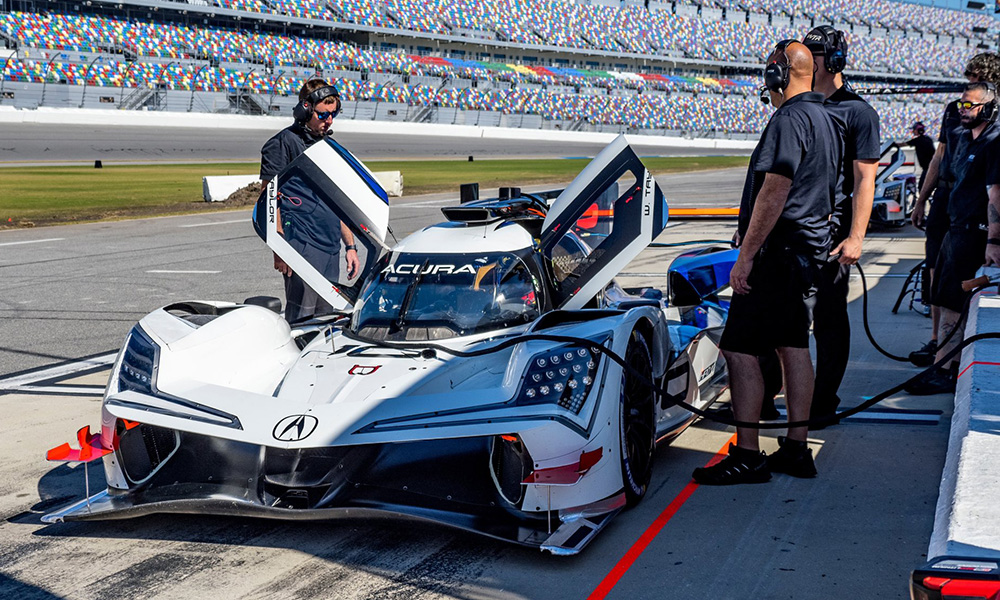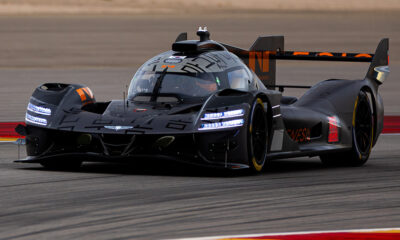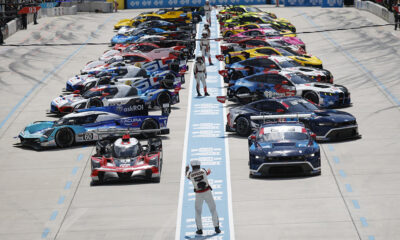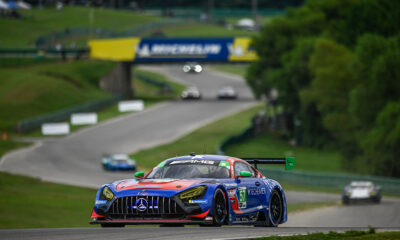
Photo: Brian Cleary/WTR
IMSA and the ACO are targeting to have the homologations finalized for all four LMDh models by mid-November, ahead of the IMSA-sanctioned test at Daytona International Speedway according to IMSA technical director Matt Kurdock.
Set for a global debut in January’s WeatherTech SportsCar Championship season-opening Rolex 24 at Daytona, the two organizations have been working with LMDh manufacturers Acura, BMW, Cadillac and Porsche in recent weeks at NASCAR’s Research and Development Center and the Windshear wind tunnel in North Carolina to complete the process.
Several cars, including the Acura ARX-06, went straight to the facilities following the first IMSA-sanctioned test at Michelin Raceway Road Atlanta earlier this month, with private on-track testing having occurred since then, both at Sebring International Raceway and Daytona International Speedway.
Despite facing a tight schedule, Kurdock said they remain on target to meet the initially prescribed deadlines.
“IMSA and our partners at the ACO have outlined a fairly comprehensive homologation process for the LMDh cars,” he told Sportscar365.
“We’re hoping to have that all wrapped up in the middle of November with time to be able to get the cars in their final specification for the December sanctioned test that’s planned with IMSA.
“These cars are very complex. There’s a lot of detail that have to be captured.
“The cars are taken fully apart at the NASCAR R&D center so we can go through the hundreds of pages of homologation material and make sure the weights and measures and photographs and other details are captured appropriately.
“That all takes time and the manufacturer partners have been putting a lot of focus on it in making sure that IMSA and the ACO get the information we need.”
Kurdock said that wind tunnel testing is in its “final stages” of completion, in what has been a new experience for each of the manufacturers and chassis constructors, with cars needing to fit a much tighter performance window compared to DPi or GT homologations.
“It’s necessary that all of them meet the prescribed targets in the regulations in order to be successfully homologated,” he explained.
“The aerodynamic performance window is arguably very tight compared to what some of the manufacturers are used to from their GT background or DPi background.
“That makes it a difficult target to hit but we’re progressing through it.”
While not confirming if all four manufacturers have been in the wind tunnel, Kurdock said it has been their goal to have each manufacturer complete the process in one session.
“There’s a couple of days of preparation involved,” he said. “The cars are presented, they go through scrutineering by IMSA and ACO staff, our aerodynamicists from IMSA and ACO go through a long list of preparations along with the manufacturers and constructors.
“When we go into the wind tunnel, it’s a full day test to run through a variety of tests that are performed under varying conditions from trying to finalize the specification of the car into that homologation window and identify the range of adjustment that the cars would be limited to in their homologation.
“It’s certainly a process that’s well-aligned with what the FIA and ACO are doing with Hypercar so that allows us to further the convergence efforts between us on that.”
“Process in Place” for Updates During Homologation Cycle
While cars will be locked into specification for a five-year period through the end of the 2027 WeatherTech Championship and FIA World Endurance Championship seasons, Kurdock said non-performance-related updates will be possible, although subject to IMSA and ACO approval.
Unlike the Le Mans Hypercar ruleset, the so-called ‘joker’ update is not permitted in the LMDh technical regulations.
“There are things that are going to come up over the five-year homologation cycle like parts that may be obsolete or there may need to be safety updates to the cars and there’s certainly a procedure to do that and get the approval of the ACO and IMSA and update their paperwork,” Kurdock said. “That may require additional inspection and testing.
“For sure five years is a long time and we recognize that while we want stability in the homologations, at some point in time you just never know what aspect of the car you wouldn’t be able to source anymore or that goes through an update from the supplier.
“We’ve got to be able to provide the LMDh manufacturers and constructors the ability to update throughout the homologation cycle if necessary.”

























